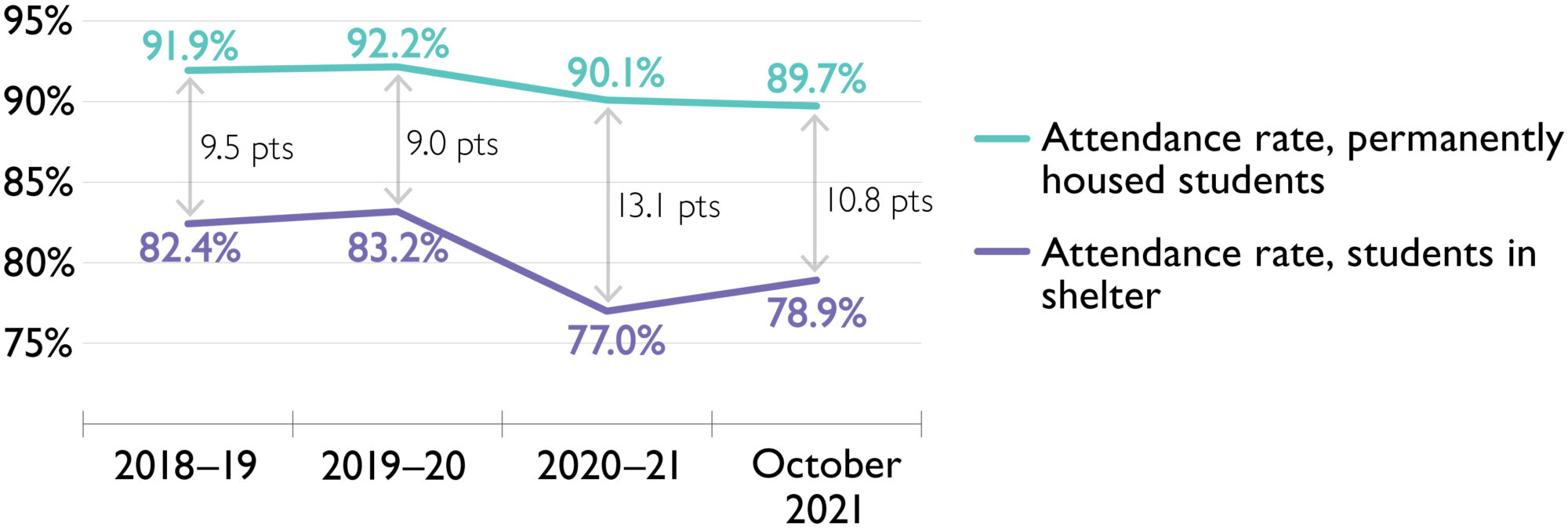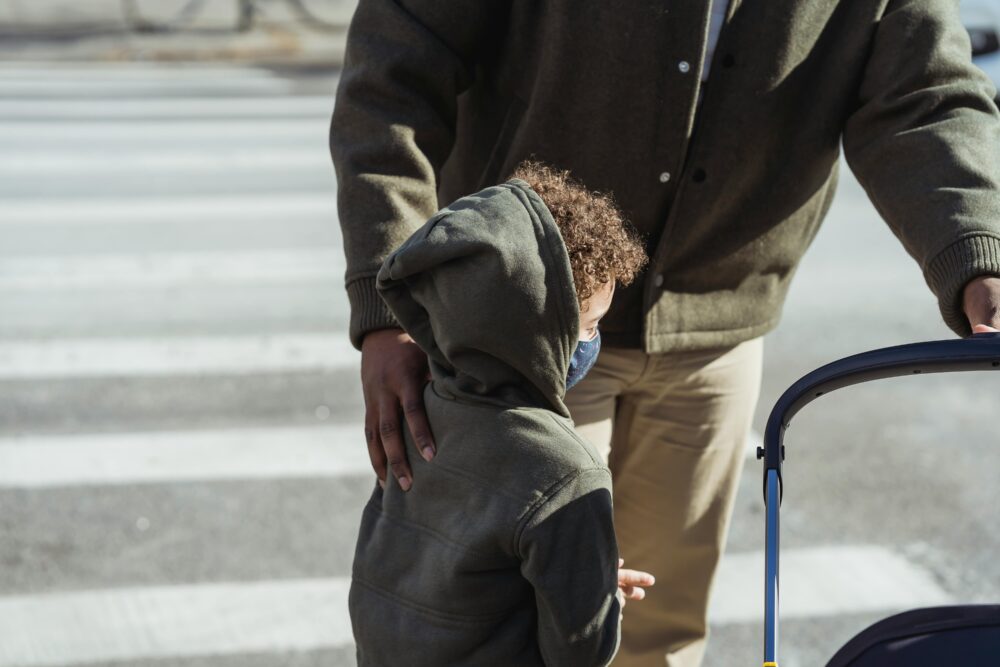Still Disconnected: Persistently Low Attendance Rates for Students in Shelter
According to monthly attendance data released by the New York City Department of Education (DOE), students living in homeless shelters continued to have significantly higher rates of absenteeism than their permanently housed peers following the full reopening of schools in fall 2021, and attendance disparities remained larger than they were prior to the pandemic.

Advocates for Children of New York (AFC) released a new policy brief, Still Disconnected: Persistently Low Attendance Rates for Students in Shelter, highlighting alarmingly low attendance rates for students living in homeless shelters and calling on the New York City Department of Education (DOE) to direct federal COVID-19 relief dollars towards hiring shelter-based staff who can help ensure students who are homeless get to school every day.
As AFC documented in a prior brief, students in shelter had the lowest attendance rate of any student group from January to June 2021, when most City students were learning remotely some or all of the time. Attendance data from this past fall show that the resumption of full-time in-person instruction in the 2021-22 school year has not addressed the barriers to attendance facing students experiencing homelessness. In October 2021, the most recent month for which data are publicly available:
- Students living in shelter had an overall attendance rate of 78.9%, almost 11 percentage points lower than the attendance rate for permanently housed students and a larger gap than that seen prior to the pandemic.

- Tenth and twelfth graders in shelter had attendance rates below 70%, meaning they missed the equivalent of more than a week of school in the month of October alone.
- For students in grade 12, the difference in attendance rates between students in shelter and their permanently housed peers was 17.5 percentage points, a larger gap than existed for that grade level in spring 2021.
The DOE has already committed to hiring 50 shelter-based DOE community coordinators—who will help families navigate the school system and address barriers to attendance—using a portion of its federal American Rescue Plan-Homeless Children and Youth (ARP-HCY) funds. However, 50 staff will not be nearly enough to properly serve the 28,000 students who spend time in the more than 200 shelters across the City each year.
Over 30 organizations and the City Council have called on the DOE to hire an additional 100 shelter-based community coordinators, for a total of 150, using its remaining $24 million in ARP-HCY funding. Yet despite these calls, the DOE’s current proposal for its next round of federal funding fails to include any investment in additional DOE staff who can work on the ground in shelters and provide targeted support to families. Instead, the DOE is proposing to spend millions of dollars to extend a more sophisticated data portal to all shelters and develop new online tools—even though there are not sufficient staff with the time, knowledge, and skills necessary to be able to analyze and use the enhanced data to make a meaningful dent in the problem of chronic absenteeism. The DOE is also proposing to spend ARP-HCY funding on a slew of new programs, but none of them—beyond the 50 community coordinators—is targeted at tackling the abysmal attendance rates of students in shelter. The DOE will be submitting its plan for the funding to the State Education Department at the end of the month.
“The Administration’s current proposal for spending millions in federal funding does not address the most fundamental problem, which is that children in shelter are not getting to school in the first place. School can transform the lives of students who are homeless, but only if students get there. With the federal funding available, the Administration has the opportunity and responsibility to tackle chronic absenteeism for students living in shelter by investing in coordinators to figure out why students aren’t making it to school and resolve the problems that stand in their way.”
Jennifer Pringle, Director of AFC’s Learners in Temporary Housing Project
“The $24 million in federal education funds for students experiencing homelessness is a transformative opportunity for DOE to invest in staff on site at shelters to get at the root causes of absenteeism and provide the support families and students need,” said Catherine Trapani, Executive Director of Homeless Services United. “More tools and pilot programs without investment in staff are bound for failure. Shelter provider staff are tasked with numerous responsibilities—helping families secure jobs, housing, and social services; there need to be staff on site with the bandwidth, expertise, and skill set to focus full time on the education of students.”
-
View the press release as a PDF
May 18, 2022
Media Coverage
-
Child advocates say NYC Education Dept.’s plan to support homeless kids falls short
-
DOE’s pricey data portal for homeless students doesn’t solve concerning attendance issue: critics
-
Attendance remains 'alarmingly low' among students in shelters, analysis says


